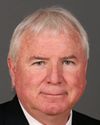In order to prevent illness and to prepare the troops, the most important thing for a soldier is to be well-trained in his or her area, to have faith in his abilities as a combat soldier, as a member of an armoured unit, as an artillery officer, and to receive realistic leadership training which will be put to the test during the mission. It is this type of teamwork which can really help to deal with various situations.
It is the job of the leaders, after a major or shocking incident has occurred—in an informal manner—to sit down with the soldiers and to talk about what has happened, to go over what was done well and not so well, to see how everyone is dealing with what happened, and to determine whether things are good.
This process, the simple fact of sitting down as a team, is very important. It is much better than bringing in a psychologist; that approach does not work very well.
After a major shock, the thing that can help an individual not to develop post-traumatic stress syndrome is to receive good social support, be it either from one's military family or from one's real family. That is what a soldier needs to deal with a major shock.
If I may, Mr. Chairman, I would like to point out that our leaders are not trained to diagnose post-traumatic stress disorder. They are trained to see if something is not right, is not normal, but they do not make a diagnosis, because the problem may not involve post-traumatic stress disorder.



